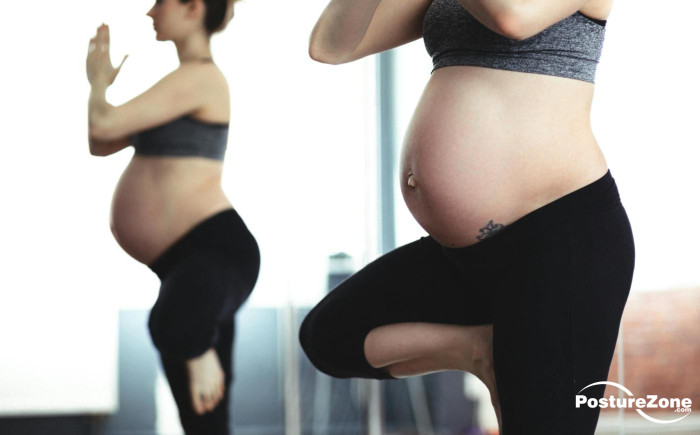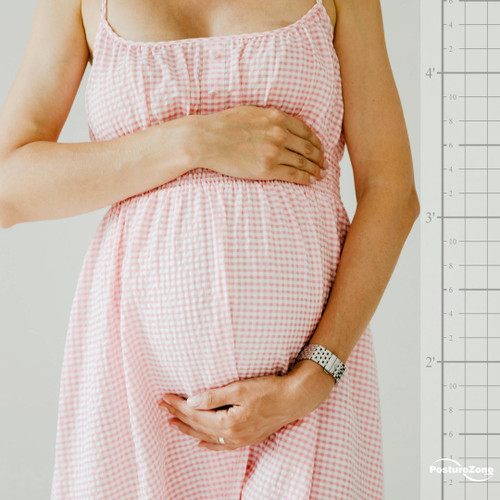Supporting Maternal Health: The Chiropractor's Role in Prenatal and Postnatal Care
Posted by PostureZone on 2nd Sep 2024
As chiropractors, we understand the profound impact that proper spinal alignment and musculoskeletal balance can have on health, energy and activity. Still, many patients and healthcare providers are not well versed on the unique benefits that chiropractic care can offer during the prenatal and postnatal periods.
In the The Biomechanics of Pregnancy: A Systematic Review, the authors find, "During pregnancy, a number of biomechanical and hormonal changes occur that can alter spinal curvature, balance, and gait patterns by affecting key areas of the human body. This can greatly impact quality of life by increasing back pain and the risk of falls."

During pregnancy, a woman's body undergoes significant physical changes, including an increased weight load, postural adaptations, and hormonal fluctuations. These changes can lead to a variety of musculoskeletal issues, such as back pain, pelvic misalignment, and joint discomfort. According to the American College of Obstetricians and Gynecologists, the expanding uterus shifts the center of gravity and stretches out and weakens abdominal muscles. This changes posture and puts additional strain on the back. Plus, the extra weight means more work for muscles and increased stress on joints.
By providing appropriate chiropractic care, we can help alleviate some of this stress and support our patients' comfort and changing body throughout their pregnancy journey.
Pregnancy Patient Communications
One effective approach is to incorporate periodic posture assessments using a posture grid. By tracking changes in posture over the course of the pregnancy, we can identify any developing imbalances or misalignments and address them through targeted adjustments, stretches and exercises. This proactive approach can help prevent or mitigate common pregnancy-related discomforts and prepare the body for the demands of labor and delivery.
Beyond addressing musculoskeletal concerns, some research suggests that maintaining proper pelvic alignment and balance through chiropractic care may facilitate an easier labor and delivery process. While more studies are needed in this area, the potential benefits are worth exploring with our patients.
In the postnatal period, new mothers face additional physical challenges as their bodies recover from childbirth and adapt to the demands of caring for a newborn. Back pain, pelvic misalignment, and overall musculoskeletal strain are common issues that can significantly impact a mother's comfort and quality of life during this crucial time.

Periodic posture images taken during pregnancy are a compelling communication and tracking tool and will set a baseline for comparison post delivery and recovery.
By continuing to provide chiropractic care in the postpartum period, we can help new mothers manage these concerns and support their physical recovery. Regular posture assessments and adjustments can help identify and address any lasting postural changes or imbalances that may have occurred during pregnancy and childbirth.
As chiropractors, we have a unique opportunity to support maternal health throughout the prenatal and postnatal periods. By educating our patients about the potential benefits of chiropractic care during this time, and by incorporating techniques like posture assessments and targeted stretches and adjustments, we can help alleviate discomfort, promote proper alignment, and contribute to an overall more comfortable and supported pregnancy and postpartum experience.
How to track postural changes during pregnancy?
1. Choose a posture assessment chart:
- Wall Mount Grid - Preferred by chiropractors, fits all body types, durable, comes in Metric Grid as well
- Door Mount Grid - Grid can be installed on a door or wall, and is durable
- Portable Grid - Sets up in seconds, comes in Metric as well
2. Take a class or read a how-to book:
- Posture Pictures online course - 90 minutes, watch anytime and go at your own pace
- Posture Pictures book - a fast-read that will get you started the same day
- Chiropractic Continuing Education Credit Hours - learn an posture rehab exercise program (CE approved)
- Certify as a Posture Specialist (CPEP) - Posture specialization certification for chiropractors


